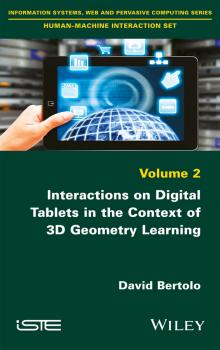ТОП просматриваемых книг сайта:
David Bertolo
Список книг автора David BertoloInteractions on Digital Tablets in the Context of 3D Geometry Learning. Contributions and Assessments - David Bertolo
Аннотация
Over the last few years, multi-touch mobile devices have become increasingly common. However, very few applications in the context of 3D geometry learning can be found in app stores. Manipulating a 3D scene with a 2D device is the main difficulty of such applications. Throughout this book, the author focuses on allowing young students to manipulate, observe and modify 3D scenes using new technologies brought about by digital tablets. Through a user-centered approach, the author proposes a grammar of interactions adapted to young learners, and then evaluates acceptability, ease of use and ease of learning of the interactions proposed. Finally, the author studies in situ the pedagogic benefits of the use of tablets with an app based on the suggested grammar. The results show that students are able to manipulate, observe and modify 3D scenes using an adapted set of interactions. Moreover, in the context of 3D geometry learning, a significant contribution has been observed in two classes when students use such an application. The approach here focuses on interactions with digital tablets to increase learning rather than on technology. First, defining which interactions allow pupils to realize tasks needed in the learning process, then, evaluating the impact of these interactions on the learning process. This is the first time that both interactions and the learning process have been taken into account at the same time.

